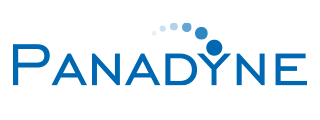Boron nitride (BN) ceramics are among the highest performing technical grade ceramics. They combine exceptional temperature-resistant properties, including high thermal conductivities, with high dielectric strength and outstanding chemical inertness to resolve challenges in some of the most demanding application areas worldwide.
Boron nitride ceramics are manufactured through hot-pressing. This method utilizes temperatures as high as 2000°C (3632°F) and moderate to significant pressures to induce sintering of raw BN powders into a large compacted block, called a billet. These boron nitride billets can be easily machined and finished into components with smooth, complex geometries. Easy machinability without the hassle of green firing, grinding, and glazing enables quick prototyping, design changes and fast qualification cycles in many advanced engineering applications. One such application of boron nitride ceramics is for plasma chamber engineering. In addition to thermomechanical and electrical properties common to many advanced ceramics, what makes BN unique for plasma environments is its resistance to sputtering and low propensity of secondary ion generation, even in the presence of strong electromagnetic fields. Resistance to sputtering helps with the longevity of components, whereas low secondary ion generation helps maintain the integrity of the plasma environment.
It has been employed as an advanced insulator in various thin film coating processes, such as plasma-enhanced physical vapor deposition (PVD). Boron nitride ceramics have also been used to enhance the performance and service length of Hall-effect thrusters on orbital satellites.
Boron Nitride Ceramics for Physical Vapor Deposition
Physical vapor deposition refers to the extensive range of vacuum-based thin-film coating methods employed for surface engineering of a variety of materials. Employing one of the several methods to generate and deposit target material onto a substrate surface, including sputter deposition, PVD Coating methods are commonly used in the construction of optoelectronic devices, precision components for automotive and aerospace, and more.
Sputtering is a unique process where particles are forcefully ejected from a target material by sustained plasma bombardment. Boron nitride ceramics are broadly used to constrain plasma arcs in sputtering chambers onto the target material and prevent erosion of integral components in the process chamber.
Saint-Gobain Boron Nitride offers several grades suitable for PVD components in their line of COMBAT® Machinable Ceramics. Grade AX05 and HP are commonly used for manufacturing arc shrouds and rails, target frames, shields, and liners for PVD plasma chambers.
Boron Nitride Ceramics for Hall Effect Thrusters
Hall Effect thrusters use plasma as a method of propulsion for orbital satellites and deep space probes. This plasma is generated by the ionization of propellant gas, which is passed through an intense radial magnetic field within a high-performance ceramic channel. An applied electrical field axially accelerates the plasma and propels it through a discharge channel, reaching potential exit velocities in the tens of thousands of miles per hour. The challenge of this advanced technology is the proclivity for ceramic discharge channels to succumb to premature plasma erosion.
Boron nitride ceramics have successfully been used to extend the lifetimes of Hall-effect plasma thrusters without limiting their ionization efficiency, nor their propulsion capabilities. COMBAT® Machinable Ceramic grades AX05, HP and M26 have been successfully tested by satellite experts and are utilized in Hall Effect Thruster plasma chambers around the world.
Boron Nitride Ceramics from Saint-Gobain
Saint-Gobain Boron Nitride specializes in enhancing the properties of boron nitride ceramics and powders to achieve new levels of performance in the world’s most advanced industrial sectors.
If you would like any more information about the Boron Nitride Ceramics available from Saint-Gobain, please do not hesitate to contact us.
source: Saint-Gobain
